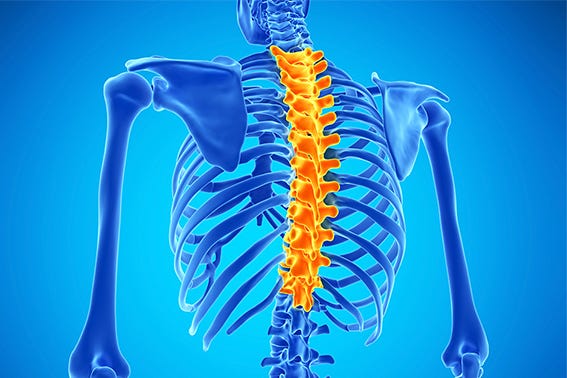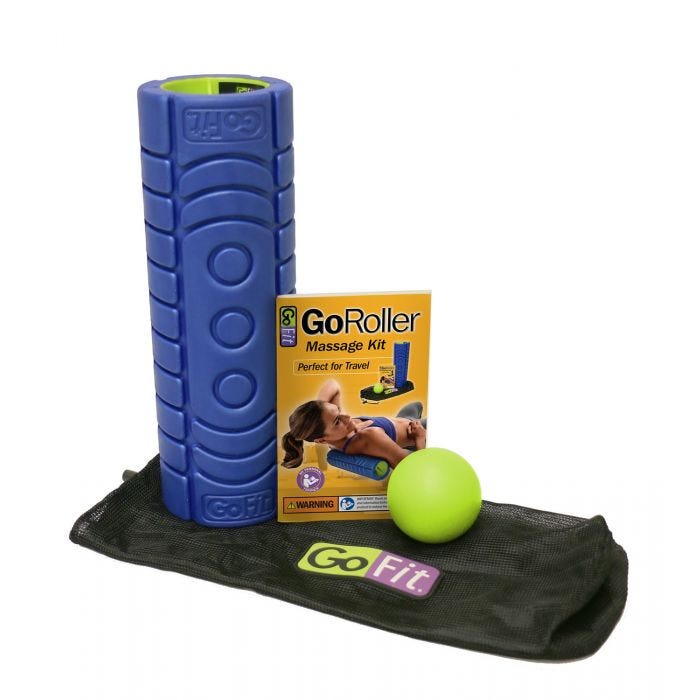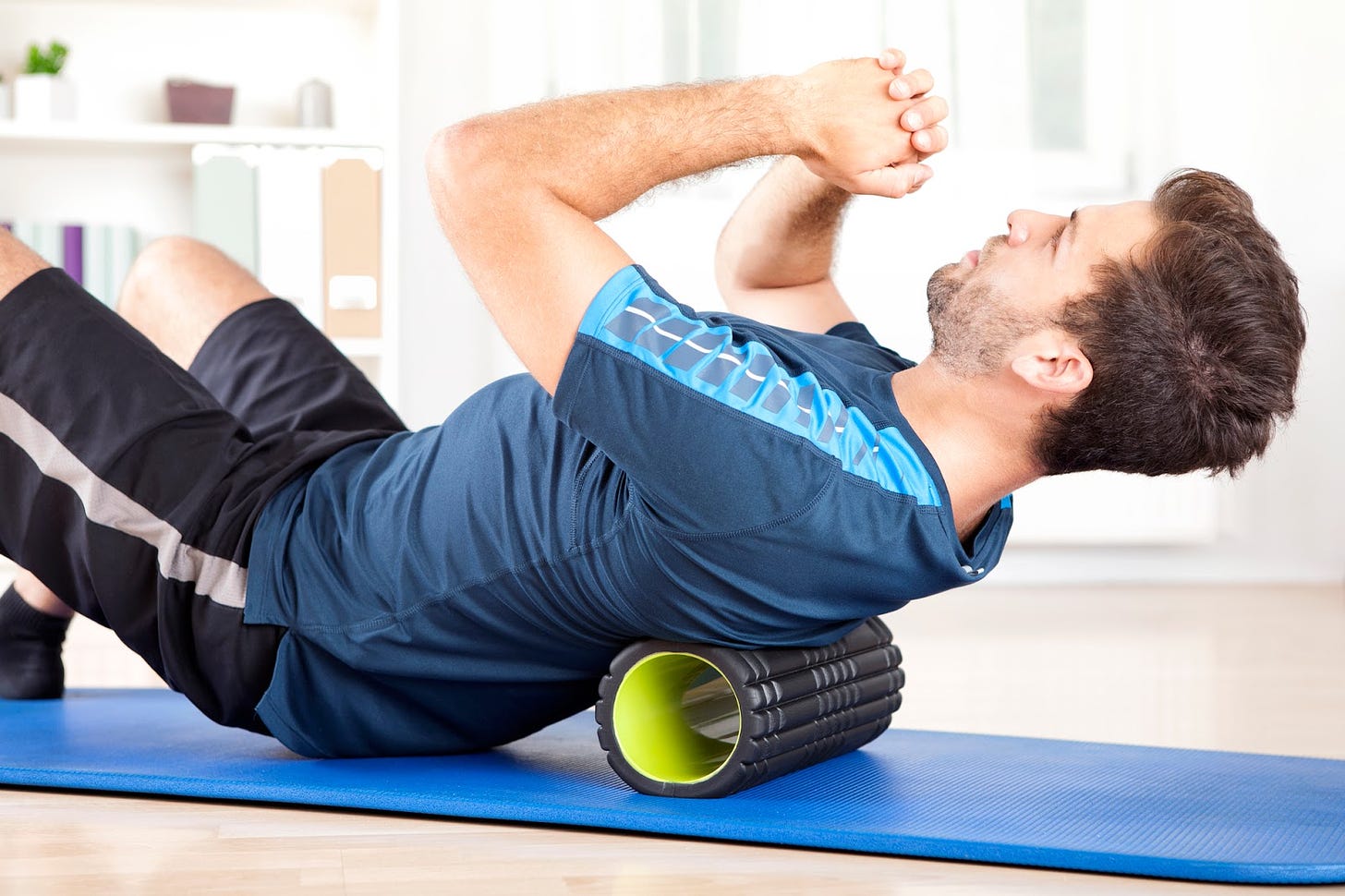
In this author’s last 2 posts, Vladimir Janda’s upper crossed syndrome (UCS) was explored, in addition to its relationship with the chronic musculoskeletal pain cycle (CMPC) (Page, Lardner, & Frank, 2010). Furthermore, stability and mobility restrictions, two central constituents of UCS, were covered as it related to the thoracic regions.
As a means of appreciating mobility and stability issues within UCS and determining appropriate corrective interventions, expositions of normal anatomy, presentation of dysfunction, underlying causes, and assessments were provided to measure joint range of motion and motor control. In the following sections, methods to correct/reset the mobility restrictions within the thoracic spine will be explored; a pre-requisite and intervention considered essential to restoring and enhancing motor control and movement quality.

As mentioned in this author’s previous post, UCS was characterized by crossed relationship between the upper posterior and anterior regions of the torso. The levator scapulae and upper trapezius on the posterior side tended to be facilitated, in conjunction with the pectoralis minor and major on the anterior side. Conversely, the serratus anterior and lower trapezius on the posterior side tended to be inhibited, in addition to the deep cervical flexors of the anterior side (Page et al., 2010).
This author also noted that winged scapula could stem from UCS, and the movement impairment could become pronounced during extension and flexion of the arms (Sahrmann, 2002). The aforementioned crossed patterns also drive the thoracic spine into hyperkyphosis, limiting extension and rotation (Page et al., 2010). Thus, a person with UCS may present with pain in the anterior shoulder area, as slouched posture is associated with shoulder impingement syndrome (Hamid-Rather, Riaz, Arshad, & Ahmed, 2014). Finally, the aforementioned symptoms may increase with overhead activities (Sahrmann, 2002).

Sitting and seated work are positions considered prevalent and ubiquitous, especially in the Westernized world; within preschool, post-secondary education, and the work force, people sit for prolonged periods of time. A study of Chinese children in 7 Chinese provinces found that children were studying for up to a total of 10 hours a day (Zhang, Seo, Kolbe, Middletadt, & Zhao, 2011). Most of the aforementioned “activities” were performed in seated positions, which included school and further study at home.
Furthermore, Matthews et al. (2008) noted that from 6,329 participants in the study between 2003 and 2004, an average of 7.7 hours a day was spent between seated and sedentary activities. Thus, prolonged and static seated positions are found among a spectrum of age groups, nationally and internationally. Such inactivity and positions are likely drivers behind the adaptive changes found within UCS. Demanding proper posture while in seated positions is the simplest, and perhaps most important, intervention to limit further dysfunction. However, it may do little to reset adaptive changes that have already occurred. In such a case, other methods must be implemented.

Self-myofascial release is a simple, yet effective, method in helping down-regulate the resting tonicity of muscles. Relaxing and lengthening facilitated muscles within UCS (i.e. levator scapulae, upper trapezius, pectoralis minor, and pectoralis major) would be a logical first step. Sullivan, Silvey, Button, and Behm (2013) reported that brief self-myofascial release (SMR), for 10 seconds or greater over a muscle group relaxes and lengthens the same muscle group. Another study indicated that combining SMR with static stretching improved range of motion greater than stretching or SMR performed individually (Mohr, Long, & Goad, 2014). Thus, a fusion of SMR and stretching would be indicated.

One corrective to help lengthen and reset the muscles in UCS would be SMR along the levator scapulae and upper trapezius. Initially, a soft foam roller could be used against the aforementioned regions. A progression of foam rolling for the thoracic region would be the use of a tennis/lacrosse ball, as its point of contact is smaller, and pressure is greater than that of the foam roll. This author would also recommend placing the client in a supine fashion against the floor, for both modalities, to help relax the torso and surrounding musculature. Slow and deliberate motions could be implemented for 8-10 repetitions, or about 10 seconds or more as indicated by Sullivan et al. (2013), up and down the thoracic region.
After implementing SMR (i.e. for the levator scapulae, upper trapezius, pectoralis minor, and pectoralis major), a mobility exercise would be implemented to help reset normal curvature of the thoracic spine, helping liberate the individual from hyperkyphosis, another symptom of UCS (Page et al., 2010). A common thoracic mobility exercise implemented is known as the rib roll (Nickleston, 2013). Here, the client assumes a side lying position whereby he/she slowly pulls the shoulder towards the floor in a slow and deliberate fashion for 6-8 repetitions per side. Efficacy of the rib pull could be measured by re-testing with the seated thoracic rotation screen, outlined in this author’s previous post (and below). Please click on the following links to view SMR, mobility drills, and the thoracic mobility screen:
LINK: Foam Roll-Upper Back
LINK: Massage Ball-Upper Back
LINK: Thoracic Spine Rotation With Rib Grab
Thoracic Mobility Screen (Picture)

In conclusion, human movement is a complex and highly coordinated event. Mitigating the effects of UCS requires a systematic approach, which first addresses mobility restrictions if they are present. Such an approach allows the opportunity to restore optimal joint range of motion and flexibility; precursors considered essential to restoring motor control, and ultimately, quality of movement.
References
Hamid-Rather, A., Riaz, S., Arshad, S., & Ahmed, S. (2014). Relationship of scapular position to shoulder muscle function: A comparative study between normal subjects and subjects with chronic protracted shoulders. JK-Practitioner, 19(3-4), 80-84.
Matthews, C.E., Chen, K.Y., Freedson, P.S., Buchowski, M.S., Beech, B.M., Pate, R.R., & Troiano, R.P. (2008). Amount of time spent in sedentary behaviors in the United States, 2003-2004. American Journal of Epidemiology, 167(7), 875-881.
Mohr, A.R., Long, B.C., & Goad, C.L. (2014). Foam rolling and static stretching on passive hip flexion range of motion. Journal Of Sport Rehabilitation. Retrieved from http://eds.a.ebscohost.com.p.atsu.edu/eds/detail?vid=7&sid=bd6a6510-bbd3-469c-947c-
Nickleston, P. (2013). The rib-roll stretch for thoracic spine mobility. Dynamic Chiropractic, 31(4), 1-3.
Page, P., Lardner, R., & Frank, C. (2010). Assessment and treatment of muscle imbalances: The Janda approach. Champaign, IL: Human Kinetics.
Sahrmann, S. (2002). Diagnosis and treatment of movement impairment syndromes (1rst ed.). St. Louis, MO: Mosby Inc.
Sullivan, K.M., Silvey, D.B.J., Button, D.C., & Behm, D.G. (2013). Roller-massager application to the hamstrings increases sit-and-reach range of motion within five to ten seconds without performance impairments. International Journal of Sports Physical Therapy, 8(3), 228-229.
Zhang, J., Seo, D.C., Kolbe, L., Middletadt, S., & Zhao, W. (2011). Associated trends in sedentary behaviour and BMI among Chinese school children and adolescents in seven diverse Chinese provinces. International Journal of Behavioral Medicine, 19(3), 342-349.
-Michael McIsaac
